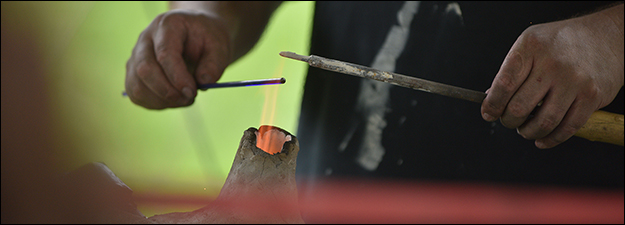The Archaeology of Medieval Europe II: Medieval Colonization
Sponsoring Organization(s)
Center for Medieval and Early Modern Studies, Univ. of Florida
Organizer Name
Florin Curta
Organizer Affiliation
Univ. of Florida
Presider Name
Andrzej Kompa
Presider Affiliation
Univ. of Łódź
Paper Title 1
The "German Colonization" on the Southeastern Frontier of Medieval Hungary: An Archaeological Perspective
Presenter 1 Name
Maria Emilia Ţiplic
Presenter 1 Affiliation
Institute for Research in Social Sciences and Humanities, Sibiu
Paper Title 2
Networks of Colonialism: The Hansa in Northeastern Europe
Presenter 2 Name
Visa Immonen, Joonas Kinnunen
Presenter 2 Affiliation
Turun Yliopisto, Turun Yliopisto
Paper Title 3
From Muslim Almunias to Carthusian Domain: Suburban Landscapes of Northern Granada (Fourteenth-Seventeenth Centuries)
Presenter 3 Name
Guillermo Garcia-Contreras Ruiz
Presenter 3 Affiliation
Univ. of Reading
Paper Title 4
Colonizing the North: Interactions between Sami and non-Sami in Seventeenth-Century Sapmi (Lapland)
Presenter 4 Name
Magdalena Naum
Presenter 4 Affiliation
Oulun Yliopisto
Start Date
15-5-2016 10:30 AM
Session Location
Schneider 1140
Description
Archaeology has not contributed much to the debate surrounding the question of the medieval colonization of the lands in East Central and Southeastern Europe (a topic infamously known as "Drang nach Osten"). The first settlement established by immigrants from German-speaking areas in Moravia and Transylvania are known to have opened vast areas for cultivation, but, at the same time, to have pushed the medieval frontiers of Bohemia and Hungary. In northeastern Europe, the presence of the German-speaking settlers is directly associated with the radical economic transformations brought by the Hansa. A transformation of the landscape is also evident in the colonization of the newly-conquered lands of the emirate of Granada, after ca. 1500, by settlers from Castile and Aragon. The relations between natives and colonists have rarely explored archaeologically, except in the case of Lapland. The session offers a number of case studies aiming at answering some of the key questions raised by the archaeology of colonization.
The Archaeology of Medieval Europe II: Medieval Colonization
Schneider 1140
Archaeology has not contributed much to the debate surrounding the question of the medieval colonization of the lands in East Central and Southeastern Europe (a topic infamously known as "Drang nach Osten"). The first settlement established by immigrants from German-speaking areas in Moravia and Transylvania are known to have opened vast areas for cultivation, but, at the same time, to have pushed the medieval frontiers of Bohemia and Hungary. In northeastern Europe, the presence of the German-speaking settlers is directly associated with the radical economic transformations brought by the Hansa. A transformation of the landscape is also evident in the colonization of the newly-conquered lands of the emirate of Granada, after ca. 1500, by settlers from Castile and Aragon. The relations between natives and colonists have rarely explored archaeologically, except in the case of Lapland. The session offers a number of case studies aiming at answering some of the key questions raised by the archaeology of colonization.


